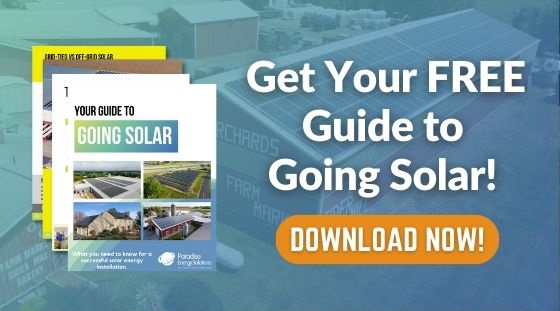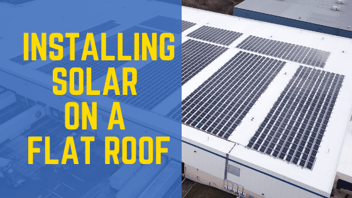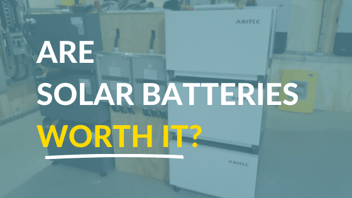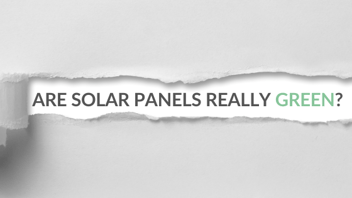5 Tips For Designing Your Next Building with Solar Energy in Mind
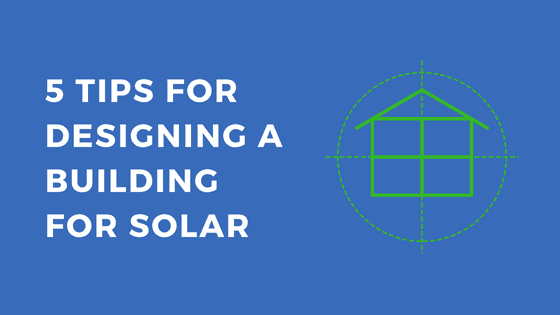
Are you planning to build a new building for your business or a new home? We’ve compiled a list of 5 tips that you should take into consideration during the planning phase of your next building project. Planning with these tips in mind will help you control the installation cost, and put your system in a position for optimum performance.
1. Make Sure There Is Enough Sun Exposure
Shade:
Perhaps the most obvious item of importance when building with solar in mind is to consider the impact of shade from external obstacles. Trees, utility poles, silos, and other obstructions need to be considered.
Orientation:
Design as close to south facing as possible. Note that this should be true south, not magnetic south.
Tilt:
Design with the tilt close to the latitude of the building. Our install area ranges from about 37° (central Virginia) to about 44° (northern New York). It is also important to consider that it will be easier to install solar panels on a lower roof tilt, and therefore will be slightly cheaper to install. Any tilt between 30°-35° will be very close to optimal for both production and ease of installation.
Additional Tip:
If it is not possible to orient the building true south, it may make sense to have a lower tilt roof. For example, a 30° roof that is facing due east or west would lose approximately 15% from optimal production. However, if the roof is 10° and facing due east or west, the array would lose approximately 10%, since it would get more sun for a longer portion of the day.
2. Consider the Distance to Your Connection Points
Electrical interconnection point:
Most solar arrays are connected to the customer’s electrical system at the utility meter or at the main electric service panel. Ideally, these two pieces of equipment would be installed on the building with the solar array and at a location that is accessible. If this connection point will be remote from the building, keep in mind the further the distance the greater the cost of the installation.
Internet source connection:
Since all solar projects should be connected to the internet for ongoing monitoring, it is important to consider how far your modem will be from the location of the solar inverters. Alternatively, a cellular data connection can be purchased for an additional charge.
3. The Location of Your Solar Equipment Is Important
There are two main parts to a roof-mounted solar array: the solar panels and the inverters. The solar panels are installed on the roof, but there will need to be consideration given to the location of the inverters. Inverters can be installed inside or outside the building. If they are installed inside, it does not need to be in a climate-controlled space, but it does need to be installed in a ventilated space. If installed outside, the preferred location would be in a shaded area. Regardless of installation location, consideration needs to be given to allow for enough space to install the solar inverters.
4. Remember The Conduit Run
All roof mount solar systems need at least one conduit run from the roof to the interconnection point. Consideration should be given as to where the conduit can be run, considering both aesthetics and ease of installation. In some cases, it may be possible to run the conduit within the building during construction.
5. Cover Your Roof With This In Mind
Roof cover (material) plays a part in the overall system cost. For example, it generally is significantly cheaper to install a solar system on a standing seam roof versus a slate roof. Below is a list of roof cover types from least expensive to most expensive in relation to installing a solar system:
- Standing seam - an additional benefit of this roof cover is that the attachments for the solar system can be clamped onto the standing seam without penetrating the roof.
- Corrugated metal - similar price as a standing seam roof, but it will require roof penetration.
- Asphalt Shingle
- Flat roofs, typically Thermoplastic Polyolefin (TPO) or EPDM
- Sloped roofs with TPO or EPDM
- Shake
- Metal Shingle - requires additional costs from a roofer to install the attachments
- Slate - requires additional costs from a roofer to install the attachments
Related Post
What Types of Roofs Are Good For Solar?
Remember, these suggestions are to help lower installation costs and position your system for optimum performance. If you are not able to build a building to match the perfect solar conditions, it’s okay. Solar still makes financial sense for a lot of businesses, farms, and homes. Ground mount solar systems and carports are also options for properties that don’t have the ideal roof for solar.
Do You Have Questions About Your Building Design?
Let us review your building plans and provide suggestions for adding solar. Our solar consultants are very knowledgeable in this area and are available to help guide you during this process. Give us a call or click the "Get A Quote" button above.
You might also find our solar buying guide to be a helpful tool. In it we answer many of the common questions people have when looking at a solar investment.

